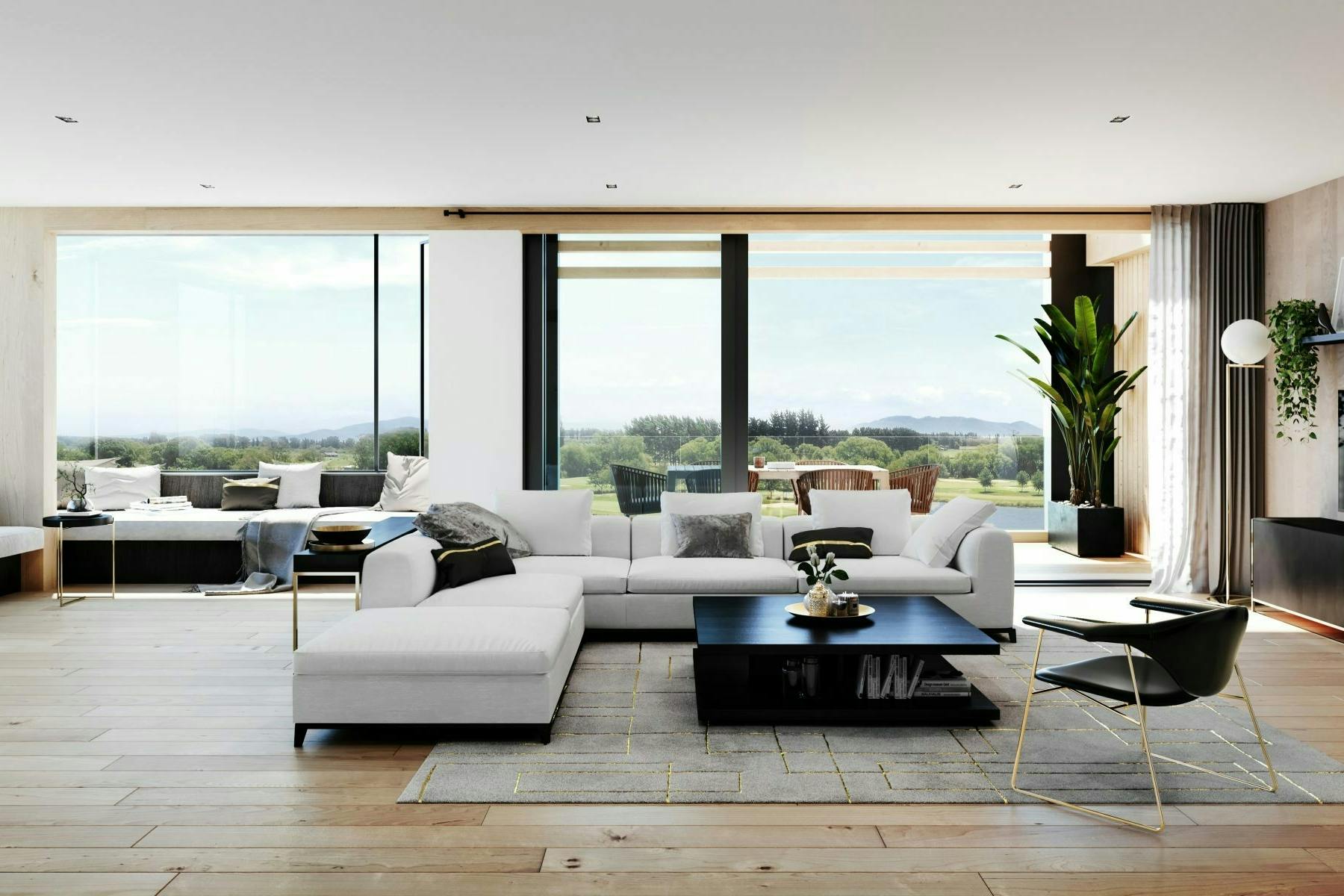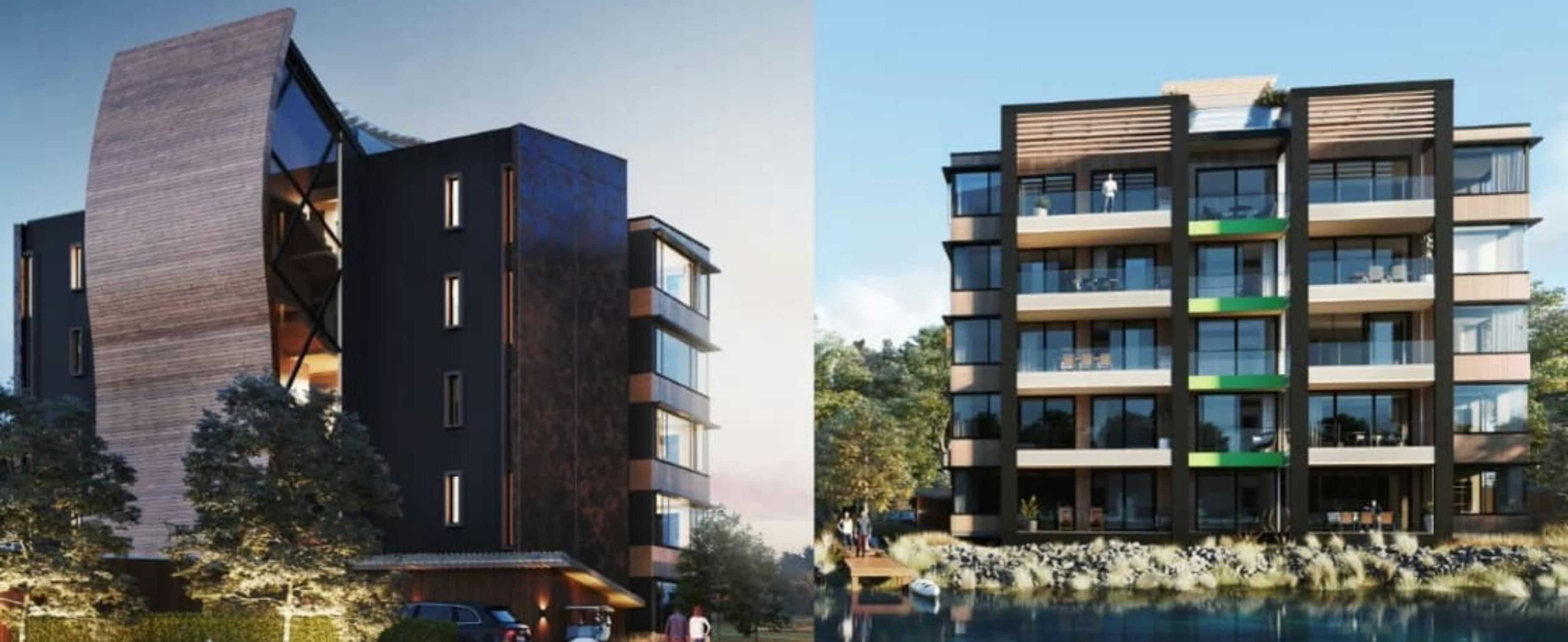Completed in 2022, the Clearwater Quays Apartment in Christchurch, a five-level, luxury, residential apartment, is not just carbon neutral, it’s carbon negative, sequestering over a million kilograms of CO2 by using mass-engineered timber in place of traditional materials. A recently released case study (see below) provides important learnings for industry professionals considering mass-engineered timber in their next project.

Summary
With the built environment contributing nearly 40% of global GHG emissions, the awareness and demand for more sustainable materials is increasing. The MBIE-led Building for Climate Change programme framework proposes to set mandatory reporting and measurement requirements for whole-of-life carbon emissions, with a sinking cap on Embodied Carbon. This pending regulatory requirement, in addition to consumers and businesses increasingly demanding sustainability in the buildings they buy or lease, is driving industry change towards more sustainable building solutions. Businesses are demonstrating their sustainability credentials through their selection of construction materials focusing on lower embodied carbon levels.
Overview
The innovative use of engineered timber, a Design for Manufacture (DfMA) and an Early Contractor Involvement (ECI) approach in this project also resulted in a 25% reduction in construction time.
“Calculations show that using wood in place of concrete to build this five-storey demonstration building is removing over a million kilograms of carbon dioxide from the environment,” says Barry Lynch, director of Logic Group, and Eoin McLoughlin, senior quantity surveyor for the Clearwater project.
Mr Lynch says carbon calculations for the Clearwater building show its timber construction saved 87,400kg of carbon dioxide (CO2), compared with a CO2 release of 952,600kg if it had been built of concrete, and 794,600kg if built of steel and concrete. The $3.37m price to design, develop and construct the apartment block would have been $3.89m for concrete construction or $3.59m for steel and concrete. The calculations include the financial impacts of construction time.
The building has a total floor area of 2,130 m2 with two open-plan apartments per level overlooking the lakefront of the prestigious Clearwater development in Christchurch.
The Clearwater case study is now available online for construction professionals (see below). The project has been deliberately designed to be open source, with all project information being made available to showcase the advantages of the new building materials and methods.
The ‘Mid-Rise Wood Construction Programme is part of the government’s Industry Transformation Plan to encourage high-value domestic processing and manufacturing from New Zealand’s plantation forests and deliver a zero-carbon construction sector by designing to increase low-carbon materials used in construction. Programme projections suggest if engineered timber is widely adopted, this construction method could save the country $330m annually by 2036.
The Programme is now focused on providing early-stage design support for commercial projects considering mass-engineered timber.
Mass Timber
Construction
P&G
Steel/Concrete
Construction
P&G
Development
Concrete
Construction
P&G
Development
Table Overview
| Building | Construction | P&G | *** Development | TOTAL | DIFF |
|---|---|---|---|---|---|
| Steel/Concrete Hybrid | 2,259,509 | 900,000 | 434,710 | 3,594,219 | +6.75% |
| Mass Timber | 2,719,915 | 649,120 | 0 | 3,367,035 | 0 |
| Concrete | 2,557,858 | 900,000 | 434,730 | 3,892,568 | +15.60% |
***Time Difference Impact on Cost:
- Delay - Weeks | 10
- Market Risk - per week | 18,000 | Adverse property market move risk of 5%/yr on $18m value development is $18,000/week risk
- Carrying cost impact - per week | 6,000 | Carrying cost of $3m land, Design/consent fees $2m and H/O overheads $1m. Total $6m at 5% is $6,000/wk
- Completion settlement - re-deploy profit - week | 19,471 | Assume developer re-deploys $2.7m (15%) profit in next dev worth $6.75m at 15% profit in next year
- Delay cost TOTAL | 434,710
Mass Timber vs Concrete/Steel | CO2 Emissions - Structural Comparison Only
Steel/Concrete
Mass Timber
Concrete
Table Overview
| Co2 | Carbon Results |
|---|---|
| Building | Upfront Carbon Measured in Kilogrammes |
| Mass Timber | -87,420 kgs |
| Steel/Concrete Hybrid | 794,682 kgs |
| Concrete | 952,622 kgs |

